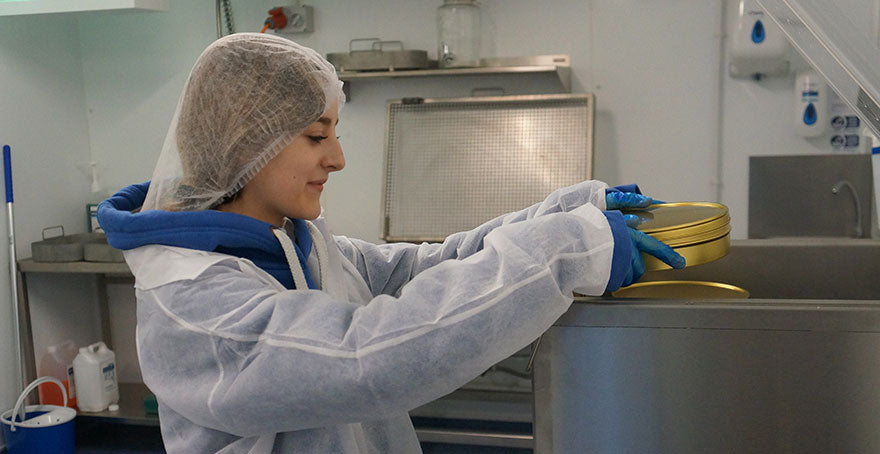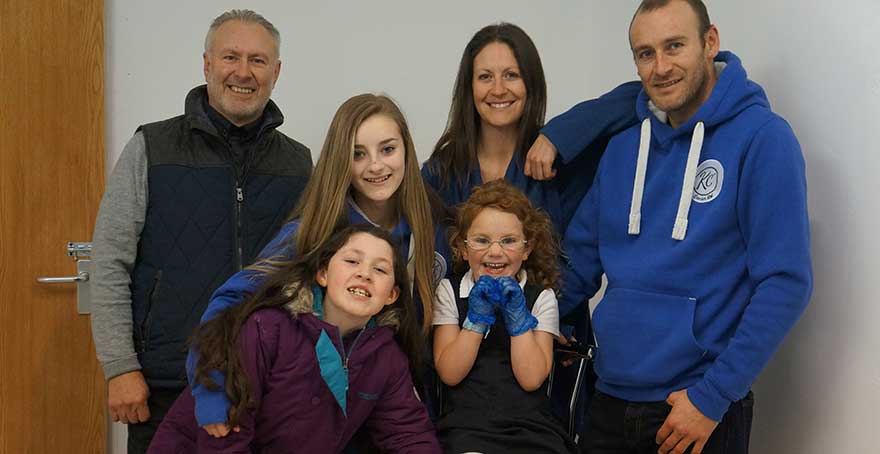Maya's Soapbox

I wasn't really sure what to expect on my first visit to KC Caviar. I confess, like the vast majority of our society, to knowing little of the caviar industry. I knew that Caviar is the salt-cured 'roe' or eggs of various species of Sturgeon. Initially, the most prized caviar came from wild Sturgeon from the Caspian and Black Sea. Unfortunately, many wild Sturgeon are now under threat because of pollution, loss of habitat and the exhaustive rates at which the fish were extracted for their prized eggs. The solution to keeping the customer supply for this delicacy became aquaculture.
Digging a little deeper on the internet it seems that very few websites are transparent about their production process. This may be that producers don't want to focus on the fact that xxx/year Sturgeon will be killed in order to produce the coveted Caviar. The only way, to date, to successfully gather the eggs was to kill the fish by cutting their bellies open. Is there not a more sustainable way of produce caviar? I was going to discover the answer to this is a hatchery, family business on the outskirts of Leeds.
Historically, John Addey and his family have been involved in the ornamental fish industry. I could very quickly tell, chatting to John, that this was far more than just a job or business venture. There was an obvious passion and dedication to this business for the sake of his family, the local community, the fish and fish welfare - a winning formula.
John told me about how his son Mark had heard about a new method of harvesting Caviar which means that the fish can go on living long, happy and fruitful years. A German aquaculturist Professor had developed a patented method of egg production. Several calls later between John and the Professor, his sincerity and authenticity meant that he was able to be awarded as the only Caviar producer to have this patented method of no kill Caviar with the potential to create a truly socially acceptable caviar.
I set off for Leeds to meet with John at the hub of KC Caviar productions. Now I don't know what images come to mind about a Caviar farm but I really didn't know what to think. I was greeted by not only John but Mark, his daughter and her young friends and relatives. Having lived near Liverpool for my teens I have a huge soft spot for northerners. I knew very quickly that this family would also prove to be the warm, dedicated, hard grafting people with huge dedication that I had grown so fond of in my time 'up North'.

After a brief chat John showed me around the farm where his affectionately termed "girls" would be staying. Large poly tunnels were set up with big ponds for the fish to swim. Each poly-tunnel reflected a different season. This would help reflect their natural life cycles and help bring the eggs on.
Mark was a power house of information about all aspects of Sturgeon. He could name all 26 scientific names of the Sturgeon and had obviously read every book, research paper and newspaper cutting on the subject. He explained their evolutionary history and their prehistoric body shape and form with a twinkle in his eye. I am quite sure that he could write his own book about Sturgeon and caviar production.
In 15 months the family, I suspect in the vast majority single handedly, had turned a building filled with horses, goats and chickens in to a clean, orderly and spotless home for his "girls". Chatting to his granddaughter Kacey it was clear that even the youngsters had helped out and were heavily involved from the fish keeping, to painting and making cups of tea. This business was born from not only a love of fish but created by a tight, driven family who know what it takes to get a business off the ground. It was hugely admirable and inspiring.
I was shown where the fish would go to have their eggs removed. There were so many elements of the build that showed how much they cared about the welfare of the fish and how much they knew about what they were doing. They explained how they wanted the egg harvesting room to be as big as possible. "We want to make sure that we've got lots of room to work around the fish. If we're relaxed and not cramped then the fish will be too. We’re going to put an extra tank in here so that we can put the fish very quickly in the water if there are any signs of distress."
Mark, John's son, described some of the industry methods of killing the Sturgeon. It was really apparent that he was interested in this business for two main reasons. It obviously hurt him to think of fish that had gone through pain and he also wanted to create a secure future for his daughter.

Next I was shown where the eggs were potted. Again this room was incredibly organised, well thought out and with the highest attention to detail. The eggs would not be showered with a high pressure industrial kitchen tap as some producers might but instead sat in a tray where the eggs would be wafted with water as they lay in a tray drifting back and forth. It was reminiscent of an expensive spa treatment in a five star hotel - lucky eggs! It’s not only the fish and visitors that get well looked after here!
In the labelling room John and Marc chatted through their labelling decisions. It all seemed so incredibly well thought out. The entire family had even been involved in their market research to ensure the best descriptive terminology on the label. “KC Caviar - socially acceptable Caviar”. I thought this perfectly summed up the business as a whole. The reference to Marc's daughter Kacey and also the dedication to fish welfare.
But that's not where the story ends. They not only are going to produce high quality socially acceptable Caviar but they also want to use their business to inspire the local community. They will soon be running a competition to name their fish for them with local schools. Watch this space for more information! They plan to offer an open, transparent business where schools can come and visit the farm. Here they can learn about Caviar production, the industry, business, animal welfare and even how one family can carve out a successful future.
There are even aspirations, in the future, that there will be an opportunity for some of their fish to be returned to the rivers of Hungary and Germany to help restock areas where the Sturgeon have become almost locally extinct. This business has the potential to work wonders for the Sturgeon both immediately in production but also further afield in their conservation in the wild.
I couldn't have been more impressed after chatting to John and the family. I left with a warm hug from John. As I drove through the chilly, snowy hills of the M62 I couldn't help but feel a little moved by my experience. There are so many lessons and wisdoms that come from this business and the family. I drove home wanting nothing more than huge success for KC Caviar and to maybe one day taste their delicious spa-treated eggs.
